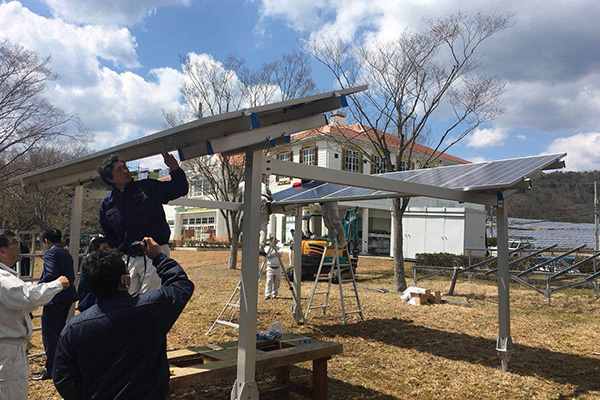Introduction: The Core of Rooftop Solar Solutions
Solar roof mounting systems are structural frameworks that secure photovoltaic (PV) modules to building rooftops, enabling efficient conversion of solar energy to electricity. These systems are pivotal in distributed energy generation, addressing key needs: spatial optimization, energy efficiency, and architectural compatibility. For instance, a well-designed system in the Northern Hemisphere typically tilts modules at 30°–45° to maximize sunlight absorption, while integrating with roof materials to ensure waterproofing and load-bearing capacity.
Key Components and Technical Architecture
1. Support Structures
– Mounting Brackets: Predominantly made of aluminum alloy or galvanized steel, these brackets withstand wind loads exceeding 120 km/h and resist corrosion. Two main types exist:
– Fixed Mounts: Cost-effective, ideal for roofs with fixed optimal angles.
– Tracking Mounts: Motorized systems that adjust module angles throughout the day, boosting power output by 15%–25%.
– Connectors: Bolts, clamps, and adapters certified under ISO 9001 ensure secure module attachment to roofs.
2. PV Module Integration
– Monocrystalline or polycrystalline panels (18%–22% efficiency) are paired with junction boxes and cables for electrical connectivity.
3. Auxiliary Systems
– Lightning Protection: Grounding networks and surge protectors mitigate risks.
– Drainage Mechanisms: Integrated channels prevent water accumulation on roofs.
Installation Workflow and Standards
1. Pre-Installation Assessment
– Roof load testing (minimum 15 kg/m²) and solar irradiance analysis (4+ hours/day optimal).
2. Design & Simulation
– Using tools like PVsyst to model energy yield and layout efficiency.
3. Construction
– Bracket alignment → module fixation → electrical wiring → grounding, compliant with UL 2703 and TÜV standards.
4. Quality Assurance
– Insulation tests, power output verification, and compliance with ISO 13485 for safety.
Selection and Maintenance Tips
– Material Compatibility: Choose brackets based on roof type (e.g., clip-on mounts for metal roofs, penetrative systems for concrete).
– Maintenance Protocol: Quarterly cleaning of module surfaces and annual checks for bracket corrosion or loose fasteners extend system life to 25+ years.
Conclusion
Solar roof mounting systems have evolved from niche solutions to essential components of sustainable architecture. As technologies like thin-film PV integration advance, their role in decarbonizing urban energy grids will only grow. For stakeholders, prioritizing certified systems (e.g., ISO 14001) and local service providers ensures long-term performance and ROI, solidifying their status as a cornerstone of the global renewable energy transition.

